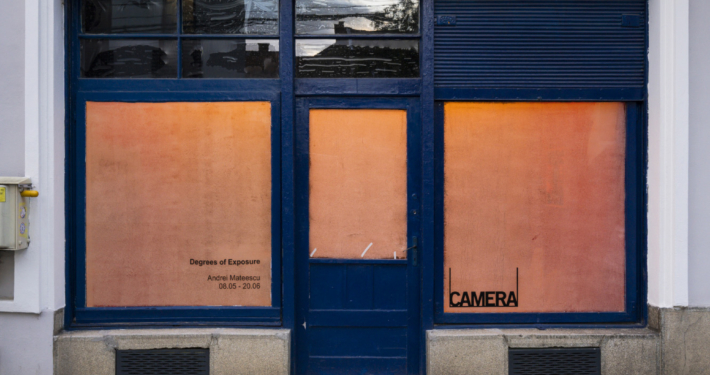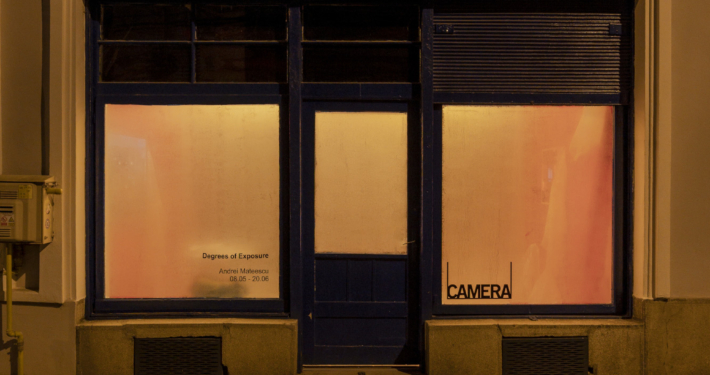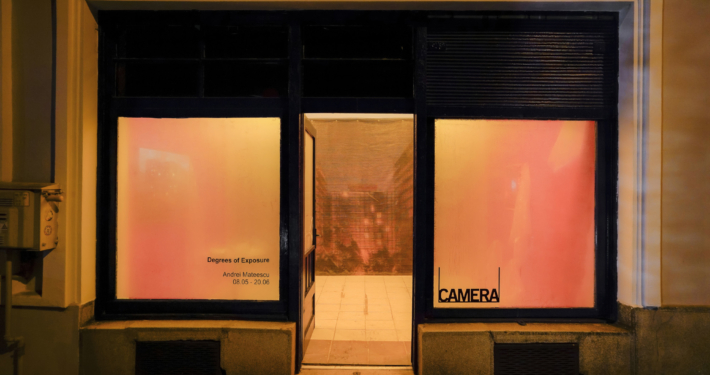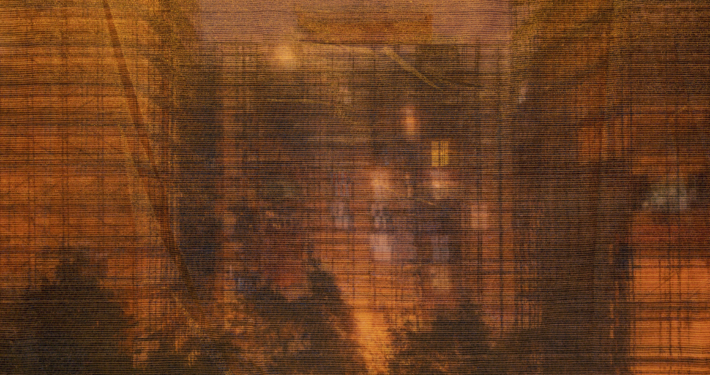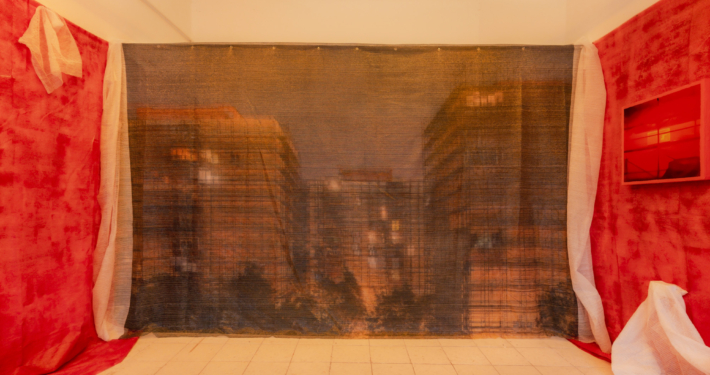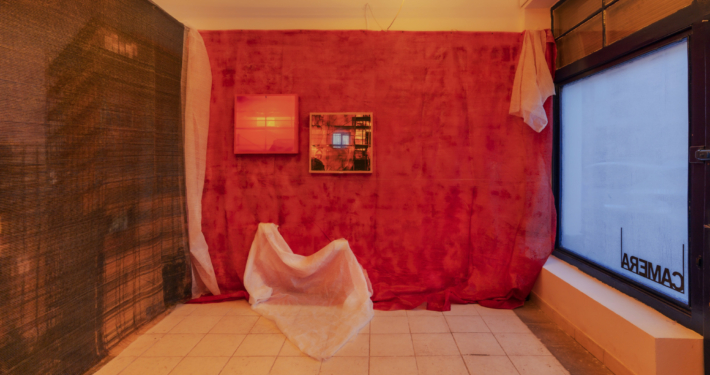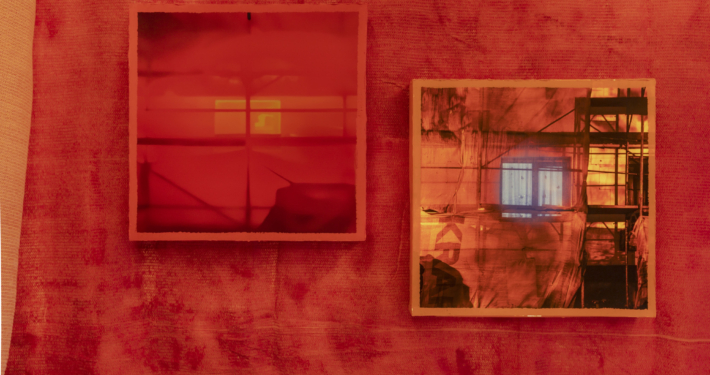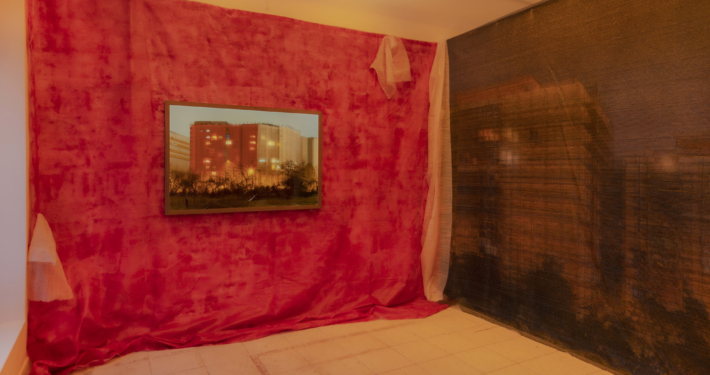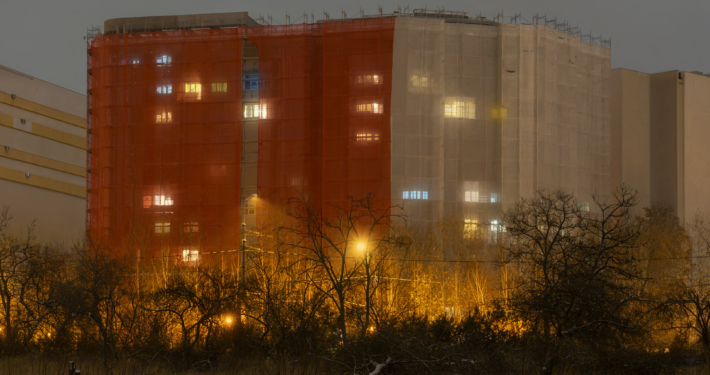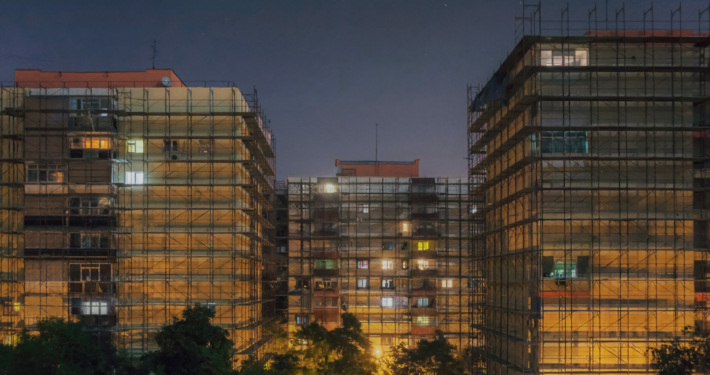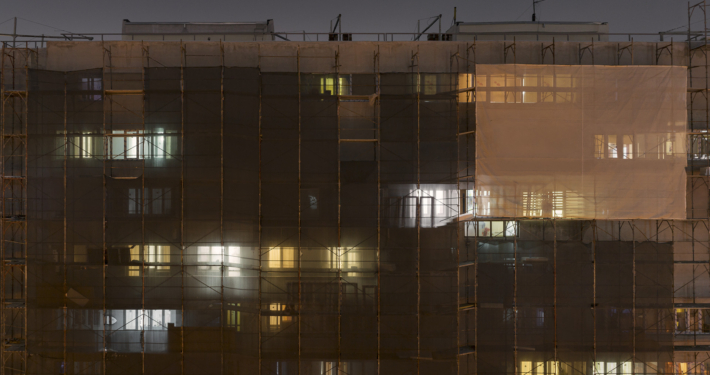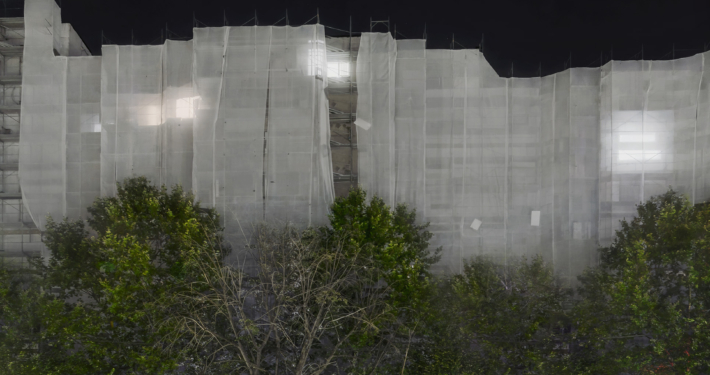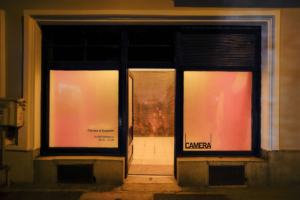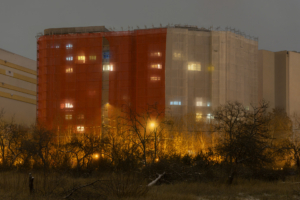Degrees of Exposure
Andrei Mateescu’s Solo Show at Camera
Multilateral/ Multifaceted
Andrei Mateescu is an artist that knows how to create layers of meaning in his works, not by adding certain elements to an image, but by removing them – a symbolic move, which manages to capture the claustrophobia caused by today’s world climate. Relevant in this sense is his early Multilateral series, which brings us face to face with a landscape that’s so familiar, but so peculiar at the same time – a staple of Brutalist architecture, the famous gray apartment blocks unravel in front of our eyes, but there is something missing: the windows, the main source of natural light and air, have been digitally removed, leaving only an almost blank canvas[1]. This sends out a subtle, but effective, message regarding the ever-growing dull and cramped urban scenery of our country, where, at every step, you might run into a remnant of Romania’s socialist past.
More than 10 years later, Andrei revisits these buildings, but this time with a twist that favors certain dichotomies – outside/ inside, public/ private space, and warm/ cold. Through this new project, titled Degrees of Exposure, the artist documents the process, but also the consequences, of the ‘thermal rehabilitation’ plan in Bucharest, which considerably reshaped the urban scenery people were accustomed to. Just like in the Multilateral series, the focus is not only on the buildings alone, but also on what they represent – a country still shadowed by its past, but also in a state of constant change. However, we can also notice certain differences from Andrei’s previous approach to city landscape: the buildings are pictured during nighttime (or at sundown), thereby emphasizing the elements he chose not to remove, which are the illuminated windows – the only evidence that, beyond those walls of concrete, lays a life story directly impacted by all these chaotic shifts in scenery.
Outside/ Inside
For Andrei Mateescu’s solo show, we are back at Camera, a small jewel on Cluj’s Albert Einstein Street with large glass windows and a deep blue frame, elements that some artists, including Mateescu himself, manage to ingeniously integrate into the concept of their exhibition, creating a space where every little detail is part of a bigger work of art. For Degrees of Exposure, the gallery becomes an unusual portal between the outside and the inside, between the public and the private space. The reason why I am calling it unusual is because Andrei plays a trick on the viewers: by covering the two large windows and the smaller one of the door with thin layers of white paste, making them transluced, he mystifies the interior of the exhibition space and, therefore, spikes up our curiosity and desire to discover a place that seems to be hiding something from us. This feeling is also solidified by the warm light that’s coming from the inside, an effect created by the artist by covering the lights with a yellow plastic foil – the shaping of a private atmosphere is more than obvious, but, as we later see, the outside and the public space play an equally important role in the concept of Andrei’s project.
When you enter the gallery, the mechanism of this trick starts moving, and what you are essentially doing is walking in an inside designed to look like an outside: all three walls are covered in their entirety with red and white construction nets (the chromatic palette will also be discussed), immersing the viewer into an environment that is more than well-known. The first wall presents a single centerpiece, a lightbox of considerable dimensions that illustrates the usual apartment block with construction scaffolding and netting, where only the windows that show light remain to soften and warm up what would otherwise be an austere image image.
As a tribute to his previous series, the buildings next to it, which are not in a state of renovation, are completely devoid of windows. The huge impact of the ongoing real estate development process on the urban landscape is also highlighted by the presence – or, better said, the absence – of the infamous Bucharest IOR Park in front of the building: on the road of this disorganized ‘modernization’, green spaces are often easily discarded and transformed into sites for new apartment blocks or parking lots, leaving people little to no opportunity to spend ecreational time surrounded by nature, and not by large amounts of concrete.
Warm/ Cold
The chromatic palette represents another significant element in Andrei Mateescu’s exhibition, which can be deduced, first of all, from the title. As I have stated before, two of the gallery’s three walls are fully covered in red mesh, with a few smaller pieces of white netting, thereby creating a warm atmosphere in what’s supposed to be a sober environment, such as a construction site. This warm/ cold relationship is best emphasized on the third wall, where we can see two lightboxes: the first one is a thermal image of an illuminated window, which, according to the artist himself, ‘transforms the invisible into visible’, and the second one presents another window with light coming from within, but this time the colours are oversaturated, amplifying, this way, the clash of chromatic tones.
Nonetheless, those two are not mere lightboxes, thanks to Andrei’s technical creativity that sets the start to a different approach to private space. The first box lights up only when you get near it, giving you permission to closely contemplate the aforementioned ‘visible’, similar to what you do when you enter the gallery space. The second box, on the other hand, needs you to be far away from it and stay still in order to light up, forbidding you to intrude in someone’s personal space. Both lightboxes are, in my opinion, beautifully connected to the title of the exhibition, demonstrating that there are, indeed, multiple degrees of exposure – the ones where we allow ourselves to be exposed (to a certain extent) and the ones where our surroundings enable others to break into our own space.
The image of Romania’s infamous apartment blocks might startle nostalgia in some, or uneasiness in others. In Degrees of Exposure, Andrei Mateescu explores both the depths of our connection to this type of scenery and the consequences of the perpetual process of urbanization and building renovation in this country, all while emphasizing the presence of light – the proof of our existence in this concrete ‘empire’. Starting from his Multilateral series, the artist skillfully proved curating the elements of a photograph – choosing what gets removed and what can stay – has a considerable effect on the way the main message is delivered. By removing certain windows and only leaving in the ones that are illuminated, Andrei makes it clear that urban development has always been about people, and yet it seldom takes into account their true needs and wants.
– by Timea Toth
[1] Interestingly enough, a few air conditioners have been left on the surface of the buildings – a possible reference to the constant artificialization of our daily life.

